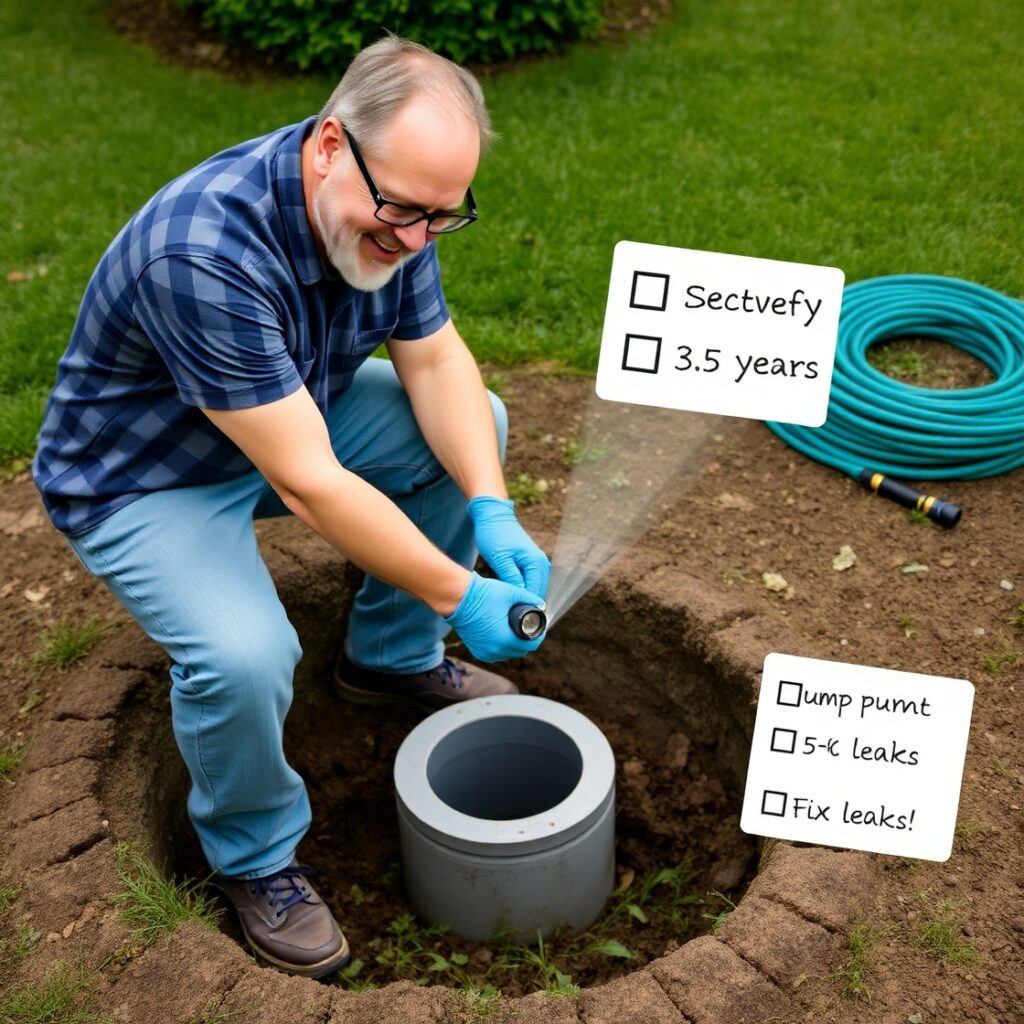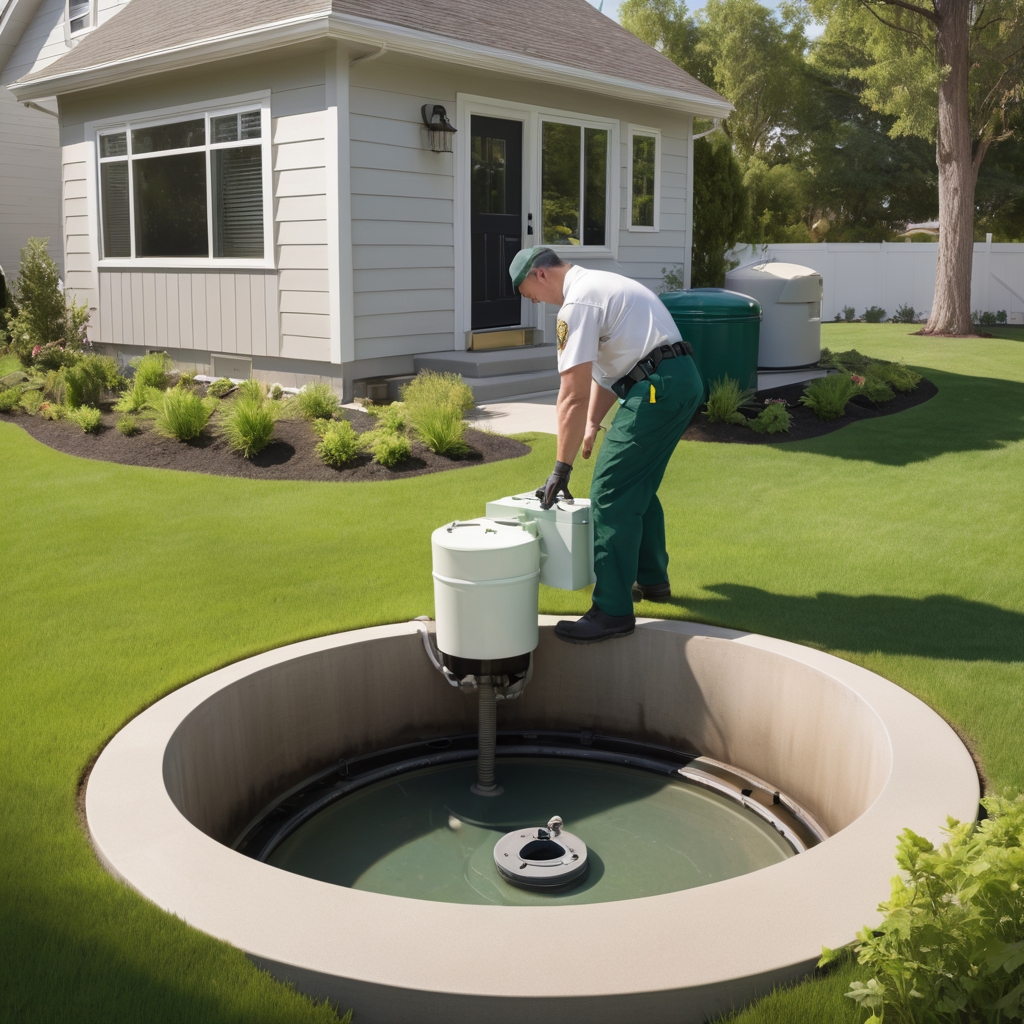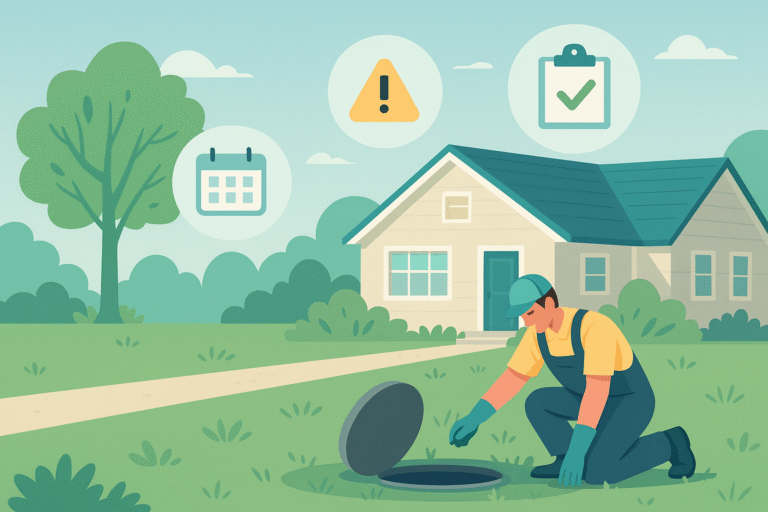7 Easy Steps to Maintain Septic Tank Effectively
Maintain septic tank effectively is crucial for the long-term health of your home’s septic system. An efficient and well-maintained septic tank not only ensures that wastewater is properly treated and disposed of but also saves you from costly repairs down the line. Maintaining your septic tank might seem daunting, but with a few simple steps, you can keep it in tip-top shape. In this article, we’ll explore seven easy steps to help you maintain your septic tank effectively.
Understanding and maintain Septic Tanks
Septic tanks are underground wastewater treatment systems commonly used in rural areas where public sewer systems are unavailable. They work by treating and disposing of household sewage onsite. The septic tank collects wastewater from your home’s plumbing—things like dirty water from sinks, showers, and toilets—allowing solids to settle at the bottom and scum to float at the top. The middle layer, known as effluent, is then discharged into the drainfield for further treatment.

It’s important to understand that your septic tank is a living ecosystem. It relies on beneficial bacteria to break down solids in the wastewater. If the bacteria are disrupted, it can lead to a variety of issues. As a homeowner, knowing how to maintain your septic tank is essential for prolonging its lifespan and ensuring it functions efficiently.
Get Free Septic Tank Diagnose Using Our Free Septic Tank Diagnose Tool
Importance of Regular Maintenance
Regular septic tank maintenance is key to preventing problems like backups, odors, and even costly replacements. Just like any other system in your home, your septic tank requires care and attention. Neglecting it can lead to a host of issues that could affect your home’s plumbing and overall health.
Statistics show that nearly one in five septic systems fails due to improper maintenance. Many homeowners are unaware that simple practices can help extend the life of their septic systems and save money in the long run. By taking a proactive approach, you can prevent significant repairs, maintain a healthy environment, and keep your family safe.
Signs Your Septic Tank Needs Attention
Before we dive into the steps for maintaining your septic tank, it’s essential to recognize some signs that indicate your system may need immediate care or maintenance. Here are a few common red flags:
- Slow drains
- Backups
If you experience any of these symptoms, don’t hesitate to take action. Ignoring the signs could lead to expensive repairs and environmental hazards.
Official EPA septic system guidelines
Step 1: Know Your Septic System
Your first step in effectively maintaining your septic tank is learning about your specific system. Familiarize yourself with where your tank is located, its size, and how it operates. Here are a few things to consider:
- Tank Size
- Understanding Your System
By comprehensively understanding your septic system, you can identify what needs to be done for routine maintenance and recognize potential issues much earlier.
Step 2: Monitor Water Usage
Excessive water usage is a common cause of septic tank failure. The more water your household generates, the more pressure you’re putting on your septic tank. Here are a few practical tips to monitor and reduce your water usage effectively:
- Fix Leaks
- Limit Flushing
By monitoring and minimizing your household’s water use, you’ll help your septic tank function optimally and reduce the risk of flooding the system.
Step 3: Schedule Regular Pumping
One of the critical maintenance tasks for your septic tank is scheduling regular pumping. Over time, solids will accumulate in your tank, requiring it to be pumped out. Here are some guidelines on when and how often to pump your septic tank:
- Pumping Frequency
- Hire Professionals
Scheduling regular pumping will allow you to keep solids from overflowing, prevent backups, and protect the surrounding environment.
Step 4: Maintain Drainage Area
The area surrounding your septic tank and drainfield is equally important as the tank itself. Here are some critical tips to maintain the drainage area:
- Avoid Heavy Items
- Regularly Check for Blockages
By maintaining your drainage area, you help protect your septic tank’s efficiency and prevent costly repairs from environmental damage.

Step 5: Use Septic-Friendly Products
When it comes to maintaining your septic tank, the products you use daily matter. Prioritize septic-friendly products to support the good bacteria that break down solids and waste. Here are some suggestions:
- Septic-Safe Toilet Paper
- Choose Safe Cleaning Supplies
Making small changes to the products you use can have a big impact on keeping your septic tank healthy.
Step 6: Educate Your Household
Everyone in your household should understand the importance of maintaining your septic tank. Education is key to preventing mishaps. Here are some tips for educating your family:
- Discuss Best Practices
- Provide Easy Access to Information
By educating your household about septic tank care, you’re empowering everyone to take part in an essential routine that can extend the life of your septic system.
Step 7: Hire Professional Inspections
Investing in regular professional inspections is a proactive step toward maintaining your septic tank effectively. An expert can identify potential issues that may not be visible to the untrained eye. Here’s what you should consider:
- Regular Inspections
- Document Findings
Professional inspections provide peace of mind that your septic system is functioning correctly while giving you an opportunity to catch potential issues early.
University research on septic maintenanceConclusion
Maintaining your septic tank effectively doesn’t have to be overwhelming. By following these seven easy steps—knowing your system, monitoring water usage, scheduling regular pumping, maintaining your drainage area, using septic-friendly products, educating your household, and hiring professional inspections—you can prolong the life of your septic system and ensure it operates efficiently.
Incorporating these habits into your routine doesn’t only save money but also promotes a healthier environment and safeguards your family’s well-being. Remember that proactive management is the key to preventing costly repairs and maintaining a functional septic tank for years to come.
FAQs
How often should I maintain my septic tank?
It’s generally recommended to have your septic tank pumped every 3 to 5 years, depending on the size of your household and tank. Regular inspections should also occur every 1 to 3 years.
What products are safe for septic systems?
Use septic-safe toilet paper and cleaning products that are labeled as septic-friendly. Avoid harsh chemicals and antibacterial cleaners, as they can harm the beneficial bacteria in your tank.
How do I know when to pump my septic tank?
Signs your tank may need pumping include slow drains, gurgling sounds in your plumbing, unpleasant odors around your yard, and water pooling near your drainfield. Regular inspections can also provide guidance on when pumping is necessary.
By applying these insights, you can confidently maintain your septic tank, ensuring it remains a reliable part of your home infrastructure.




